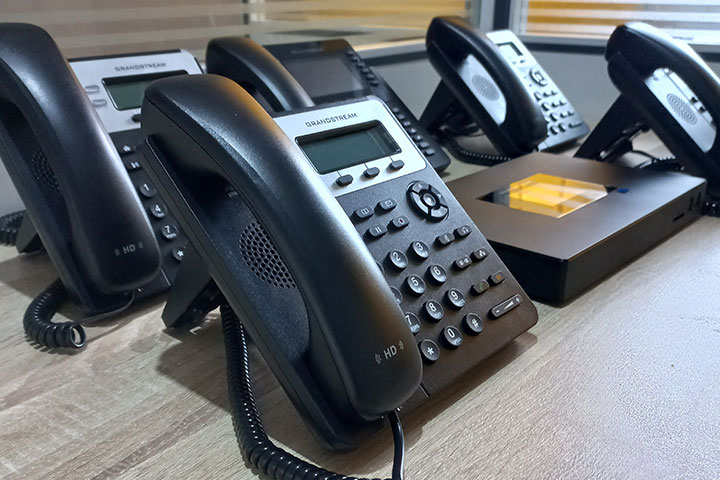Communication needs grow as your company transitions from a start-up to a thriving organization. There is need for an affordable way for team members to talk to each other, answer work calls on their mobile devices and perhaps work remotely without purchasing a dedicated phone line for each one of them. A search for this kind of setup will often lead you to looking into Private Branch Exchange (PBX) systems.
There are several PBX options ranging from simple systems with basic communication features to complex systems with much more functionality and features. If you are new to business communication solutions and associated technology, it can feel like you’ve stumbled into a conversation where everyone is speaking a different language. In this guide, we will break down all of this in simple terms.
What Is A PBX?
PBX is an acronym for Private Branch EXchange, a private telephone network that allows users within an organization to talk to each other. In short, it is an organization’s internal telephone network responsible for relaying calls internally and outbound/inbound calls from outside the organization.

PBX Hardware
PBX is an acronym for Private Branch EXchange, a private telephone network that allows users within an organizat
Types Of PBX Systems
There are three (3) main types of PBX systems:
1. Traditional Analog PBX
Traditional Analog PBX systems allow users within an organization to make and transfer calls to each other. These systems are also able to handle external phone lines for incoming and outgoing calls. Many modern features such as Mobile/Desktop Apps, Call Centre, Remote Connection, Video Conferencing services can’t be implemented in these types of telephone systems. Traditional PBX systems require onsite infrastructure that could be costly especially for startups looking for an expandable phone system. Despite the disadvantages of not being able to offer modern PBX features, these PBX systems are known to be incredibly reliable.
2. IP PBX
Apart from being able to make calls within an organization, Internet Protocol Private Branch Exchange (IP PBX) lets you use the internet to make and receive phone calls from outside the organization. PBX hardware is still installed, but instead of telephone service, you have VoIP (Voice over Internet Protocol) service. VoIP works from any internet-connected device and lets you add other communication channels, such as Video Conferencing, and instant messaging. An IP PBX allows you to enjoy the benefits of VoIP by using SIP (Session Initiation Protocol) trunking. SIP trunks basically replace the traditional analog PSTN phone lines so you can connect your business phone system to the internet and make calls.
3. Cloud Phone System
Cloud PBX systems are hosted on secure, remote data centers and are delivered through the internet. They provide the same call routing and management features of an on-premises PBX without the need for expensive hardware. Instead, you manage your private cloud-based phone network from a web portal. Other cloud services can be accessed by your team from anywhere using any internet-connected device, including an internet browser, mobile app, or desk “softphone.” The cloud PBX solution is mostly offered as a service on flexible plans, so smaller businesses can subscribe to it instead of investing heavily on an expensive on-premises system.


